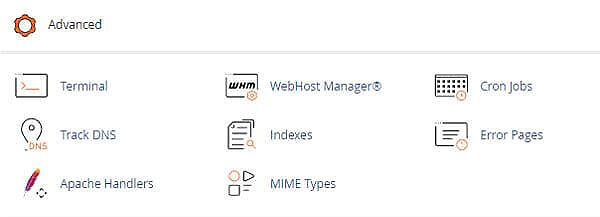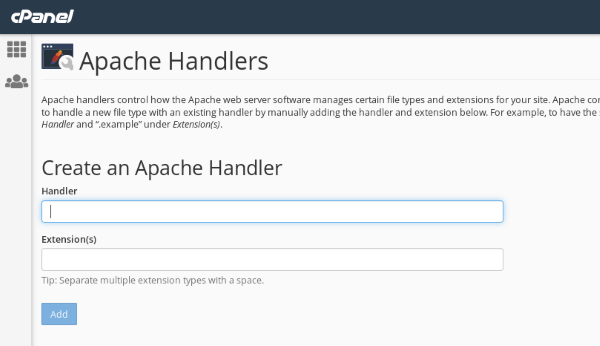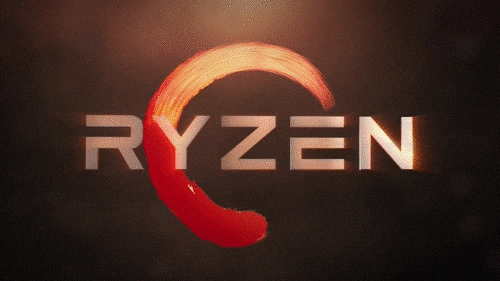Apache handlers determine how the Apache web server processes specific file types and extensions on your website. By default, Apache is set up to handle CGI scripts and server-parsed files. If you want Apache to treat a new file type using an existing handler, you can add it manually below. For instance, to make the server handle files with a .example extension as CGI scripts, enter cgi-script in the Handler field and .example in the Extension(s) field.

Create an Apache Handler
Login to your cPanel and access the option "Apache Handlers".
You can configure Apache to handle a new file type with an existing handler by manually adding the handler and extension.
Apache can handle CGI scripts and server-parsed files. The file extensions for these files include .cgi, .pl, .plx, .ppl, .perl, and .shtml.

To add an Apache handler, perform the following steps:
Enter the handler name in the Handler text box. This can be any name you choose
cPanel includes the following built-in handlers:
• default-handler - Sends the file and uses Apache’s default handler for static content
• send-as-is - Sends the file with HTTP headers intact
• cgi-script - Handles the file as a CGI script
• imap-file - Parses the file as an imagemap rule file
• server-info - Retrieves the server’s configuration information
• server-parsed - Parses the file for server-side includes
• server-status - Retrieves the server’s status report
• type-map - Parses the file as a type map file
Enter the file extension in the Extension(s) text box.
Space-separate multiple extensions (for example, .cgi .pl .ppl).
Click Add.
For more information, read Apache’s documentation.
Note: This interface does not allow you to create custom Apache handlers.
Remove an Apache Handler
To remove a user-defined handler, perform the following steps:
Click Delete under the Remove heading for the appropriate handler in the User Defined Apache Handlers table.
Click Yes.
Note: You cannot remove the file extensions that Apache automatically handles.































